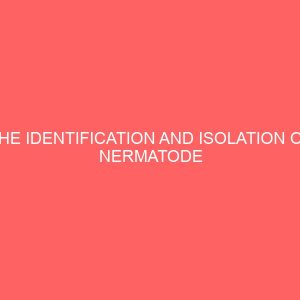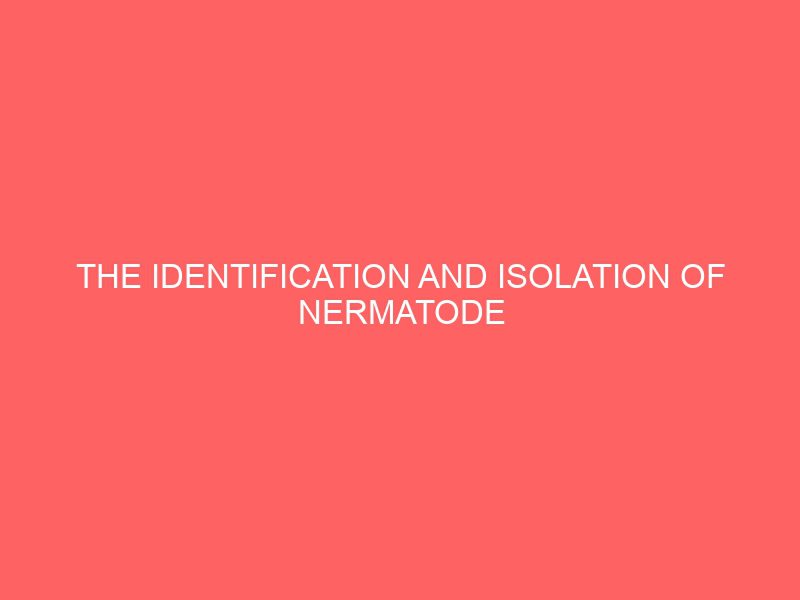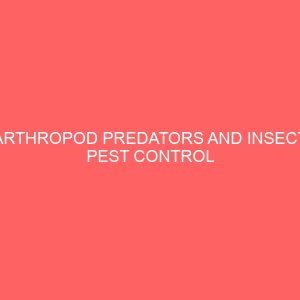Description
Nematodes are tiny, thread-like worms measuring 0.0 15 inch to 0.187 inch in length. They are either free living parasitic or saprophytic, identified on the basis of shapes, size and special structures. The females become swollen and flask-shaped as a result of accumulation of eggs with the anus virtually terminal in position, while the males are vermiform (Sherf and Macnah, 1986; Chitwood, 1949; Taylor and Sasser, 1978; Idowu, 1979 and Idowu, 1983)
Nematodes are known for causing destructive diseases of crops as they have a wide range of feeding habit, constitute about 80% of all multicellular animals, attacking nearly every crop that is grown in the field and as a result crop yields is greatly affected reducing quantity and quality of crops on field, orchard, home garden and green houses (Mai, 1985; Symth, 1994; Sasser, 1952). Among the favoured host in Nigeria as a whole include tomato, yam, tobacco, papaw, citrus and sweet potato (Sasser, 1954).
1.1 Tomato:
Tomato (Lycopersicum esculentum) belongs to the family Solanaceae and subilass polypetalae of the dicotyledenous group of plants. Tomato is a slight modification of tomato the name used by the Indians of Mexico, who have grown the plant for food since prehistoric times. Other names reported by early European explorers were tomato, tumatle and tomatas, probably variants of Indian words (Wener, 2004).
1.2 Origin:
The precise origin of tomato remains a mystery but there is reason to believe that the original tomato came from Peru called tomato, it was taken to Mexico by migrating Peruvians. It found its way to Italy through the explorations of Christopher Columbus. Tomatoes were taken back to Europe along with silver and gold and they were grown on the continent as a pretty curiosity (Fallagatter, 1999.







